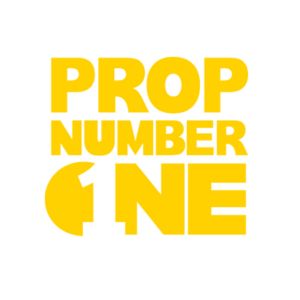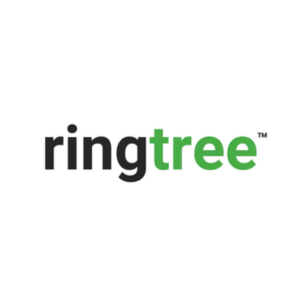
The Best 30-Day Money Challenge for Millennials: Easy Ways to Build Savings Fast
Why Millennials Need a Money Challenge
Millennials often face unique financial challenges, including student debt, rising living costs, and job market fluctuations. A 30-day money challenge is an effective tool for tackling these issues head-on. By setting small daily savings goals, millennials can build a habit of saving, making it easier to achieve financial stability and future goals, whether it's for travel, buying a home, or paying off debt.
How the 30-Day Money Challenge Works
The 30-day money challenge is designed to help individuals save gradually over a month. It involves setting aside a specific amount of money each day, either increasing the savings incrementally or maintaining a fixed amount. The challenge promotes consistency and discipline, making it easier to accumulate savings without feeling overwhelmed. It’s perfect for millennials, as it requires minimal financial commitment while yielding impactful results.
The Importance of Fast Savings for Millennials
Millennials are often juggling multiple financial responsibilities, from housing expenses to personal loans. Fast savings can provide a financial cushion in times of need or help fund short-term goals like vacations or emergency funds. The 30-day money challenge allows millennials to build savings quickly and efficiently without significantly disrupting their lifestyle. In just one month, they can make meaningful progress toward their financial goals.
Choosing the Right 30-Day Savings Challenge for You
Fixed vs. Incremental Savings Challenges
There are different types of 30-day savings challenges that millennials can choose from. The fixed savings challenge involves saving the same amount of money each day (e.g., $5 daily), while the incremental challenge increases the amount saved each day (e.g., starting with $1 on day one, $2 on day two, etc.). Deciding between these two approaches depends on individual preferences, financial flexibility, and savings goals. Fixed challenges offer stability, while incremental challenges encourage you to push your savings further as the month progresses.
Tailoring the Challenge to Your Lifestyle
Not all savings challenges are one-size-fits-all, so it’s essential to tailor the 30-day challenge to fit your lifestyle. Millennials with variable incomes, such as freelancers, may find it easier to participate in a more flexible challenge, adjusting the savings amount based on daily earnings. On the other hand, those with steady incomes may opt for a consistent savings amount each day. The key is to choose a plan that doesn’t feel overwhelming but still helps you build savings efficiently.
Tools and Resources to Help You Stay on Track
Staying on track during the 30-day savings challenge is easier with the right tools. Apps like Qapital, Digit, and You Need a Budget can automate savings or provide daily reminders to ensure you don’t miss your goals. Additionally, using savings jars or envelopes as a visual aid can help keep your progress in sight, reinforcing the daily habit of setting money aside. These tools help millennials stay motivated and accountable throughout the challenge.
Setting Your Savings Goals for the Month
Defining a Clear Financial Target
Before starting the 30-day money challenge, it’s crucial to define your savings goal. Are you saving for a specific purchase, building an emergency fund, or working to pay off debt? Defining a clear financial target will keep you focused throughout the challenge and make the process more rewarding. For millennials, this goal could range from creating a buffer for unexpected expenses to saving for larger goals like travel or homeownership.
Breaking Down Your Monthly Savings Goal
Once you’ve set a clear financial target, break down your monthly goal into manageable daily amounts. For instance, if your goal is to save $300 in 30 days, this would mean setting aside $10 each day. Breaking down the goal into smaller, achievable amounts makes the challenge feel less daunting and easier to manage, even on a tight budget. This incremental approach ensures that millennials can save without compromising their daily financial commitments.
Adjusting Goals as Needed
Flexibility is vital when participating in a 30-day savings challenge, especially for millennials who may experience fluctuations in income. Don’t be afraid to adjust your savings goals if unexpected expenses arise or if you find that your initial target is too ambitious. The important thing is to remain consistent and committed to saving, even if the daily amount needs to be tweaked. The goal is progress, not perfection.
Daily Habits to Support Your 30-Day Savings Challenge
Minimizing Impulse Spending
A key habit that supports the 30-day savings challenge is reducing impulse spending. Millennials, often swayed by the convenience of online shopping or subscription services, may find themselves making unnecessary purchases. During the challenge, consciously avoid impulse buys by creating a 24-hour rule: if you want to make a purchase, wait 24 hours to determine whether it’s necessary. This practice helps increase savings and promotes mindful spending.
Using Cash Instead of Cards
Switching to a cash-based spending system during the 30-day savings challenge can make a significant difference. Millennials often rely on debit and credit cards, which can lead to mindless spending. By using cash, you become more aware of your spending habits and are more likely to stick to a budget. Set aside your daily spending money in cash, and when it’s gone, it’s gone. This method can help prevent overspending and keep your savings on track.
Tracking Your Daily Progress
Tracking progress is essential in maintaining motivation throughout the challenge. Millennials can use budgeting apps or a simple savings journal to record how much they save daily and how close they are to reaching their monthly goal. Seeing your savings grow each day is a powerful motivator and serves as a reminder of the benefits of sticking to the challenge.
Overcoming Obstacles During the 30-Day Challenge
Handling Unexpected Expenses
Life is unpredictable, and unexpected expenses are bound to happen, especially for millennials balancing multiple financial responsibilities. If an emergency expense arises during your 30-day money challenge, don’t be discouraged. Adjust your savings plan to accommodate the unexpected cost. You might need to lower your daily savings for a few days or skip a day altogether, but the key is to get back on track as soon as possible.
Staying Motivated Mid-Challenge
Many participants lose motivation in the middle of a 30-day challenge, and millennials are no exception. To avoid this, remind yourself of your end goal and how much progress you’ve already made. Consider setting mini-goals within the challenge, such as rewarding yourself after reaching specific milestones (e.g., saving $100). Keeping your “why” at the forefront of your mind will make it easier to push through any mid-challenge slumps.
Finding Accountability Partners
An excellent way for millennials to stay committed to the 30-day savings challenge is by involving friends or family members. Having an accountability partner ensures that you stay on track and can make the challenge more enjoyable. Share your progress, motivate each other, and celebrate successes together. Being part of a savings community can provide support and make the experience more rewarding.
Maximizing Your Savings After the Challenge
Reviewing Your Savings Success
Once you’ve completed the 30-day money challenge, it’s important to review your success. Calculate the total amount saved and compare it to your initial goal. Reflect on the strategies that worked well for you and any areas where you struggled. This review process will provide valuable insights for future savings goals and help you continue building on the financial habits you’ve developed.
Allocating Your Savings Wisely
Now that you’ve accumulated your savings, it’s time to put that money to good use. Depending on your financial goals, you might allocate your savings toward an emergency fund, a big purchase, or paying off debt. Millennials should consider putting their savings into a high-yield savings account or using it to invest in long-term financial goals like retirement. Be intentional with how you use your savings to maximize the benefits.
Setting New Financial Goals
Completing the 30-day savings challenge is just the beginning. Use the momentum from this challenge to set new financial goals. Whether you aim to save more each month, build an investment portfolio, or finally pay off that student loan, establishing new objectives will keep your financial progress moving forward. Millennials can continue using the tools and strategies learned during the challenge to create a more secure financial future.
Transitioning to Long-Term Savings Habits
Building an Emergency Fund
One of the best next steps after completing a 30-day savings challenge is to build an emergency fund. Millennials often face unexpected expenses, from car repairs to medical bills, and having an emergency fund can provide financial security. Aim to save three to six months’ worth of living expenses in this fund, using the discipline and savings strategies you learned during the challenge.
Automating Your Savings
To maintain the savings habit developed during the challenge, consider automating your savings going forward. Set up automatic transfers from your checking account to your savings account each month. By making saving automatic, you ensure that you continue to build wealth without having to think about it. For millennials who might struggle with consistency, this is a great way to keep growing your savings.
Exploring Additional Savings Challenges
If you enjoyed the 30-day savings challenge, why not try another? Consider the 52-week savings challenge, where you save an increasing amount each week, or create your own custom challenge based on your financial goals. Continuing with savings challenges will help you keep up the momentum and continue improving your financial health over time.
Conclusion and Next Steps
Reflecting on Your Financial Progress
Completing the 30-day savings challenge is a significant accomplishment, especially for millennials juggling various financial priorities. Take time to reflect on the progress you’ve made, both in terms of savings and financial habits. Celebrate your success and think about how you can build on this momentum.
Applying the Lessons Learned
The lessons learned during the 30-day challenge—such as mindful spending, tracking your progress, and prioritizing savings—are valuable skills that can be applied to other areas of your financial life. Use what you’ve learned to create a long-term savings plan that aligns with your financial goals.
Looking Forward to a Brighter Financial Future
By completing the 30-day money challenge, millennials can look forward to a brighter financial future. Whether you continue with more savings challenges or move on to larger financial goals, the discipline and habits you’ve built during this process will serve you well for years to come.

















